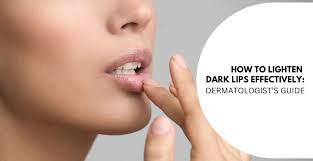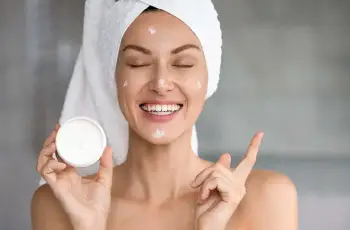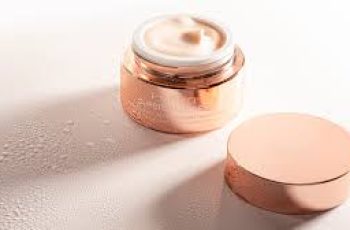
How to Tackle Hyperpigmentation Around the Mouth
Hyperpigmentation can feel overwhelming to deal with, especially when it’s concentrated in visible areas like around the mouth, but modern skincare has made it far more manageable than before.
A variety of effective products now contain powerful ingredients that help reduce the appearance of dark patches and support the skin in restoring a more even tone and smoother texture over time.
There are different causes for pigmentation, including post-acne scarring, sun exposure, hormonal imbalances, or even lifestyle changes, all of which can trigger melanin overproduction in the skin.
Although hyperpigmentation is usually harmless, its cosmetic effect—especially when focused around the mouth—can be distressing, which is why targeted treatment is often sought.
If you’re looking to manage dark spots effectively, be sure to read our full blog post focused on skincare strategies that help diminish and prevent pigmentation over time.
What Causes Hyperpigmentation Around the Mouth?
Your skin gets its pigment from melanin, which is produced by melanocytes. When these cells are overactive due to various triggers, they deposit more pigment, leading to dark patches or uneven skin tone.
The most common causes include sun damage, hormonal changes (like pregnancy or oral contraceptives), vitamin deficiencies, and inflammation caused by breakouts or injuries.
Post-inflammatory hyperpigmentation (PIH) is a key culprit; it’s the result of skin trauma like acne or infection that leaves behind lingering dark marks once healing occurs.
These marks can last for several months but often fade over time. However, products with antioxidants like vitamin C can help speed up the fading process significantly.
Melasma is another condition that affects the upper lip and surrounding areas, often during pregnancy. It appears as symmetrical brown or gray patches and typically fades postpartum.
Sun exposure exacerbates both PIH and melasma. UVA and UVB rays accelerate pigment production, especially on delicate facial areas like the upper lip, where sunscreen is often neglected.
To prevent sun-induced hyperpigmentation, apply a broad-spectrum SPF of at least 30 daily—even on overcast days—and don’t forget to include the upper lip and surrounding mouth area.
Vitamin deficiencies, especially in B12 and D, can also trigger or worsen pigmentation issues. Consider checking your levels and supplementing under the guidance of a healthcare provider.
Certain medications may contribute to uneven skin tone as a side effect, although these changes are usually temporary and fade once the medication is stopped or adjusted.
How Can I Lighten the Skin Around My Mouth?
To tackle hyperpigmentation around the mouth, you’ll need a consistent skincare routine that targets both the underlying cause and surface-level pigmentation.
Here are steps and ingredients that can help brighten and even out the tone of skin around your mouth:
Use Antioxidant-Rich Products: Antioxidants like vitamin C, niacinamide, and resveratrol help neutralize free radicals caused by UV rays and pollution, preventing further pigment formation.
Incorporate Chemical Exfoliants: Acids such as glycolic acid and lactic acid gently dissolve dead skin cells, which can help lift and fade dark patches over time with consistent use.
Apply a Gentle Retinoid: Retinoids accelerate cell turnover and promote collagen production. Start with a mild formula and increase potency as your skin builds tolerance.
Cleanse Thoroughly at Night: Always remove makeup, sunscreen, and pollutants at night to prevent clogged pores, inflammation, and pigmentation triggers from lingering on the skin.
Use a Physical Scrub Sparingly: If your skin tolerates it, exfoliate 2–3 times per week using a gentle scrub to remove buildup and support cell renewal, but avoid if you’re prone to sensitivity.
Hydrate and Strengthen the Skin Barrier: Use moisturizers rich in ceramides, peptides, and hyaluronic acid to support healthy skin function and prevent irritation-related pigmentation.
Daily Sun Protection: Reapply SPF every two hours during sun exposure and make sure to use a lip-safe sunscreen product or balm to protect the skin around the mouth.
What Is the Best Treatment for Facial Hyperpigmentation?
There are both at-home and professional options to treat facial pigmentation. The best route depends on your skin type, the depth of pigmentation, and your tolerance for active ingredients.
Effective professional treatments include:
Chemical Peels: These use strong acids to remove the upper layers of skin, revealing newer, less pigmented layers underneath. Options include glycolic, salicylic, and TCA peels.
Laser Therapy: Lasers like IPL (Intense Pulsed Light) and fractional lasers target melanin clusters, breaking them up and promoting a more uniform tone and smoother texture.
Microneedling: This technique uses tiny needles to stimulate collagen and allow better penetration of brightening serums. It’s ideal for surface pigmentation and acne scars.
Prescription Topicals: Dermatologists may prescribe hydroquinone, tretinoin, or corticosteroids to reduce melanin production and fade stubborn pigmentation over several weeks.
Retinoids: Retinoic acid (a form of vitamin A) is particularly effective at increasing cell turnover and improving overall skin clarity when used consistently over months.
How Long Does Hyperpigmentation Take to Fade?
The timeline for fading depends on the cause, severity, and treatment approach. For mild PIH, you may see improvements within 6–12 weeks using topical treatments consistently.
Melasma can take several months to fade, especially if you’re still exposed to its hormonal triggers. Sun-induced pigmentation may take 6–12 months—or longer—to improve.
In deeper cases of pigmentation affecting the dermis, fading may take a year or more, even with intensive treatments. Patience and consistency are critical for long-term success.
Will Hyperpigmentation Go Away On Its Own?
Some types of hyperpigmentation will naturally fade over time, especially if they’re superficial and caused by temporary factors like acne or hormonal fluctuations.
Melasma often resolves after pregnancy or when hormonal triggers subside, but maintenance treatments are recommended to prevent recurrence.
However, sunspots and pigmentation from long-term UV exposure can persist for years. These often need targeted treatment and strict sun protection to improve.
Preventive measures like daily SPF, a strong antioxidant skincare regimen, and avoiding harsh scrubs or unprotected sun exposure will help minimize future dark patches.
Final Thoughts
Treating hyperpigmentation around the mouth requires a holistic approach that includes proper sun care, antioxidant support, gentle exfoliation, and medical guidance if necessary.
Stick to a targeted skincare routine for at least 12 weeks before judging the results—skin turnover takes time, and deep-rooted pigment requires ongoing commitment.
Consult a dermatologist to confirm the cause of your pigmentation and design a personalized treatment plan, especially if over-the-counter products haven’t made an impact.
Consistency, protection, and expert advice are your best tools for achieving a more radiant, even-toned complexion—especially in delicate and visible areas like around the mouth.


